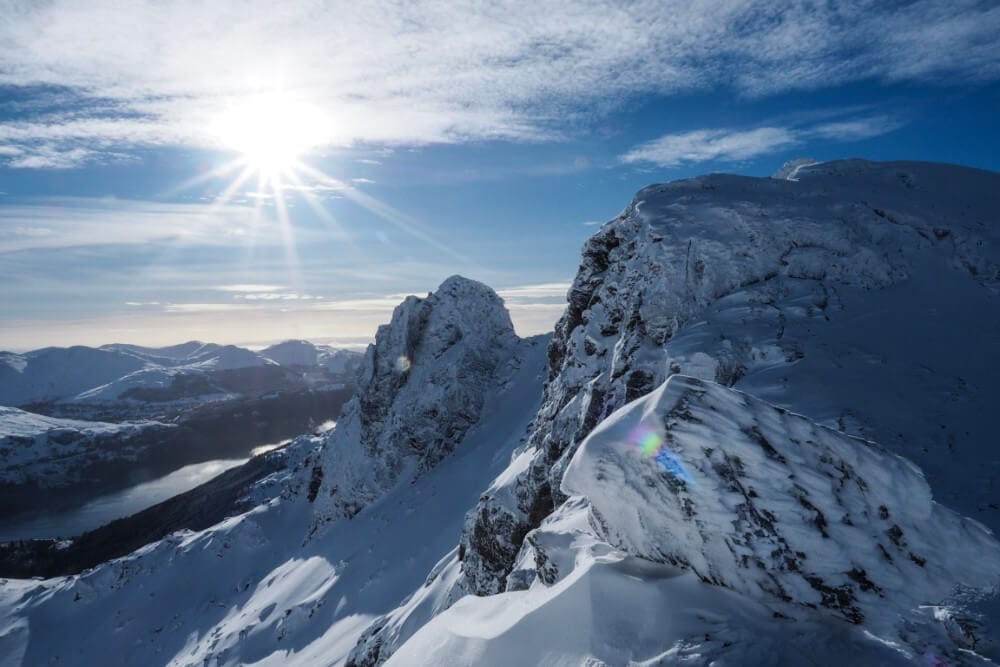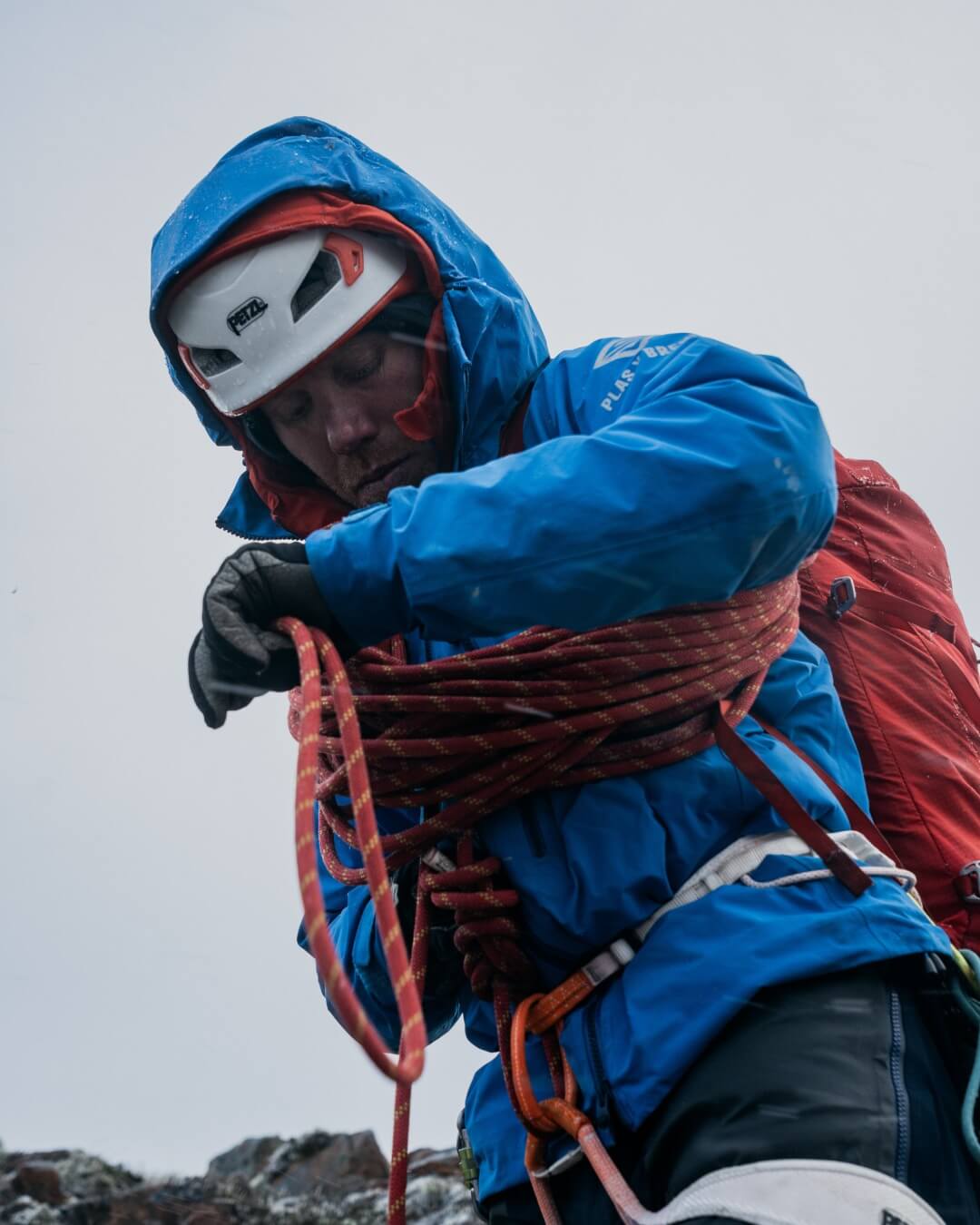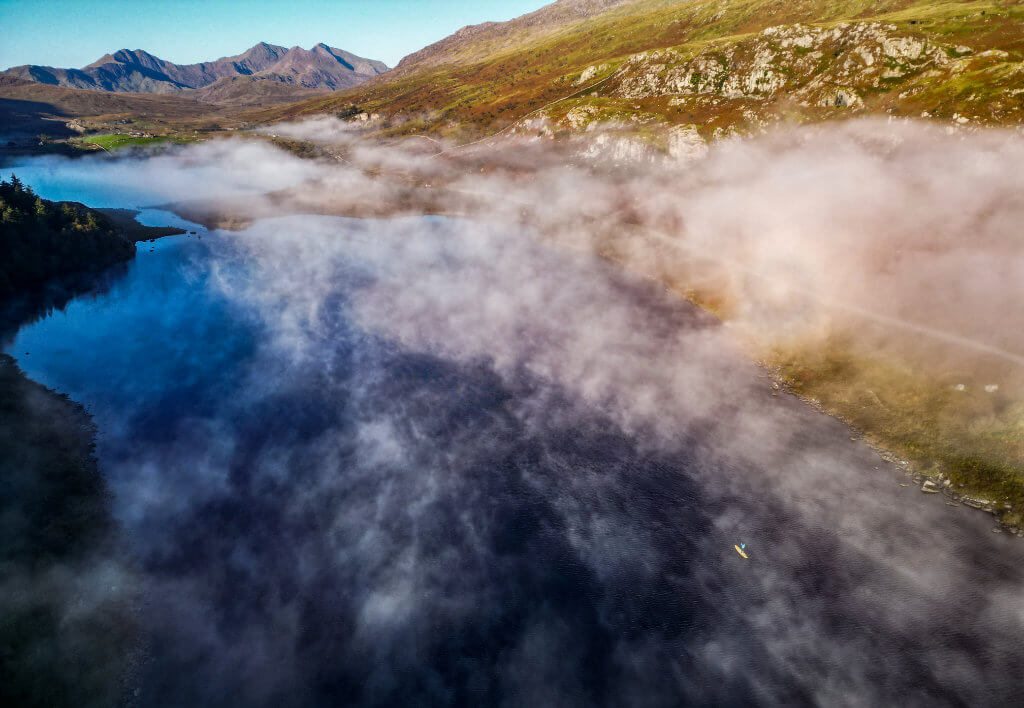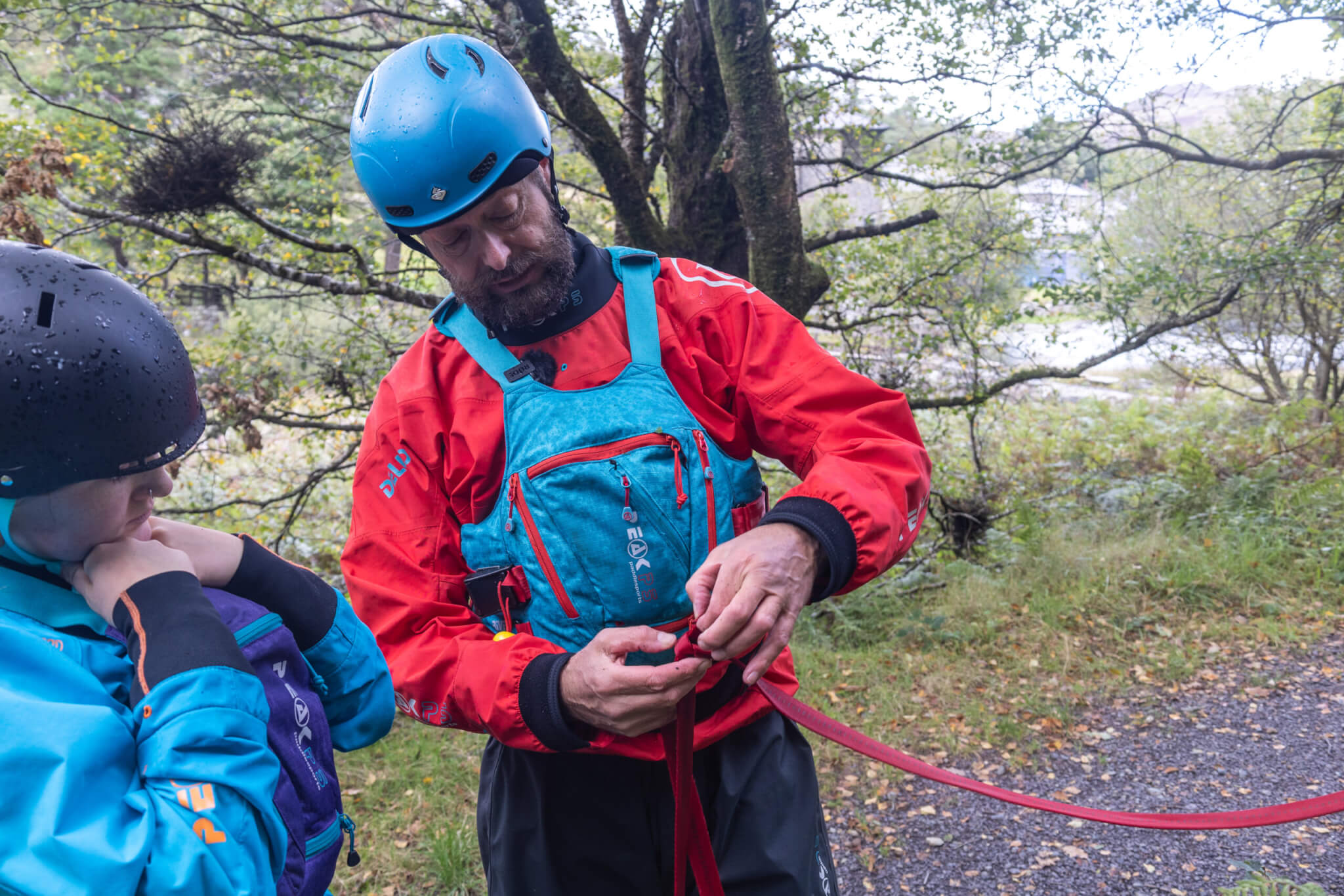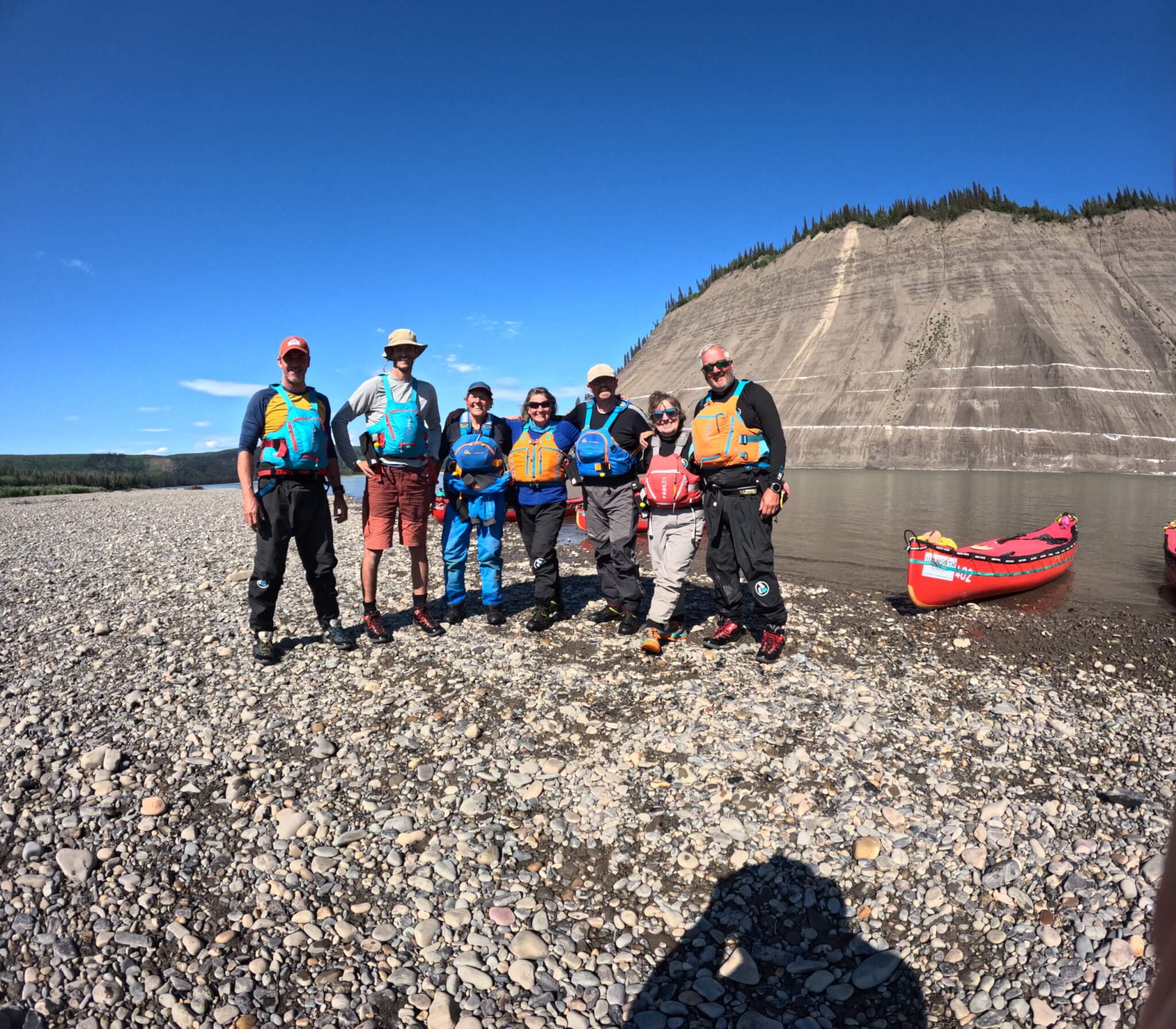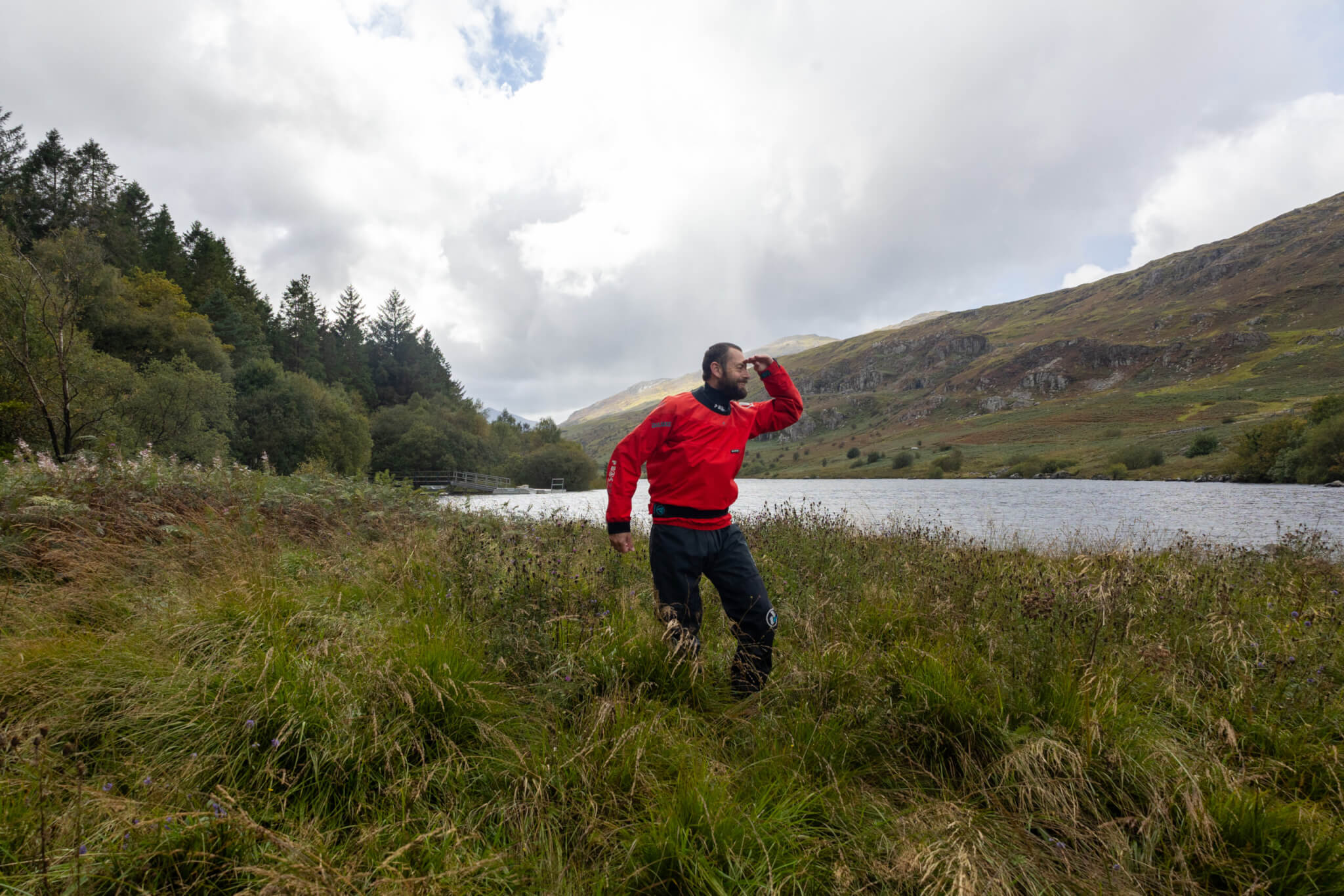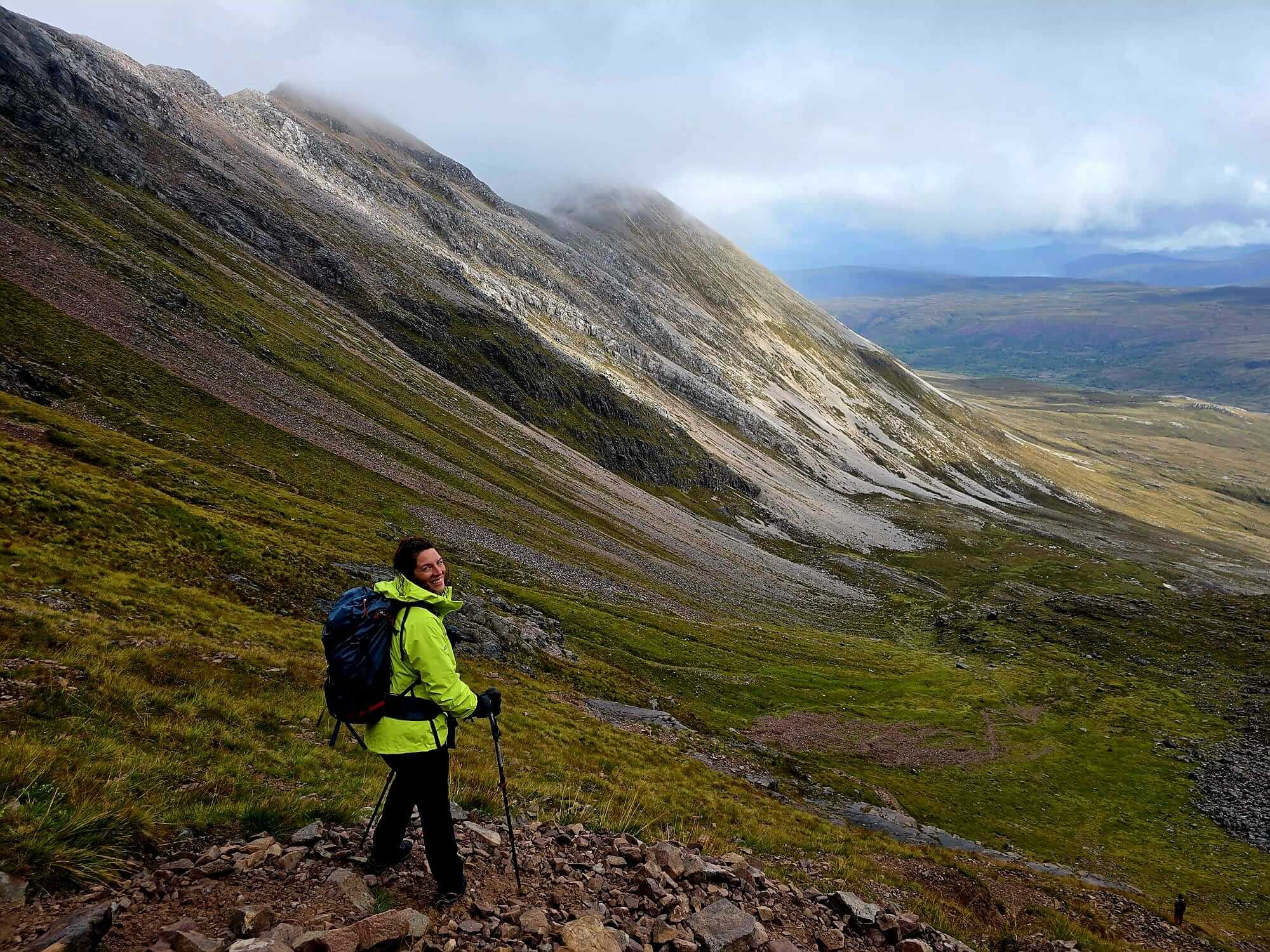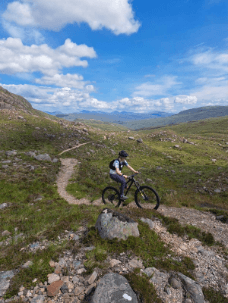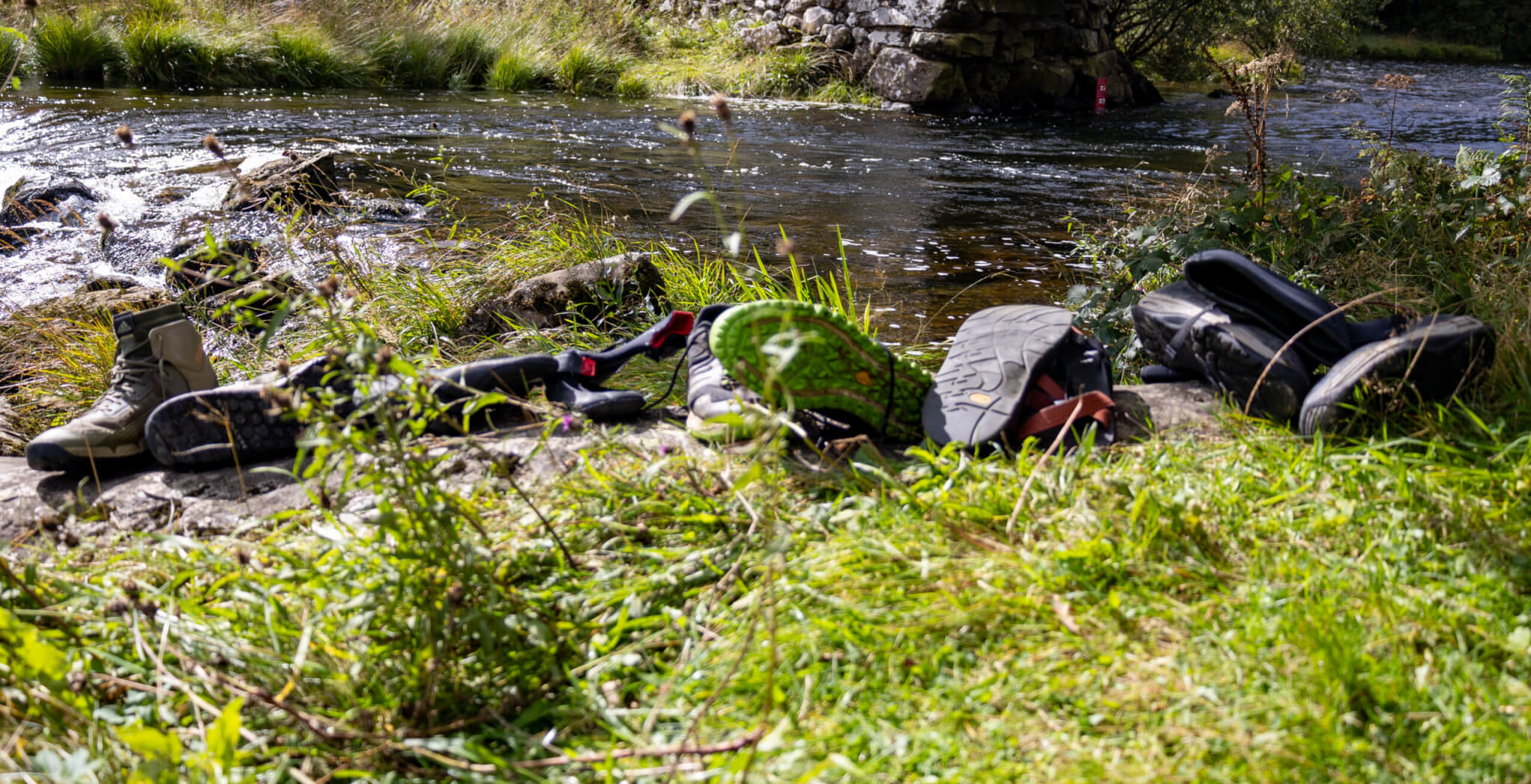International Mountain Day
Olly Sanders - Senior Instructor PYB
"Changabang (aka the shining mountain) India. I read Pete Boardman's classic book during my first ascent of the west face in my youth, and until recently hadn't had a second ascent . I was lucky to be invited on an attempt about 15 years ago and we had a good go but were stopped by massive snowfall. It was a fantastic desperately hard and humbling trip , but I got to see it in the full glow and to see why it was called the Shining Mountain"
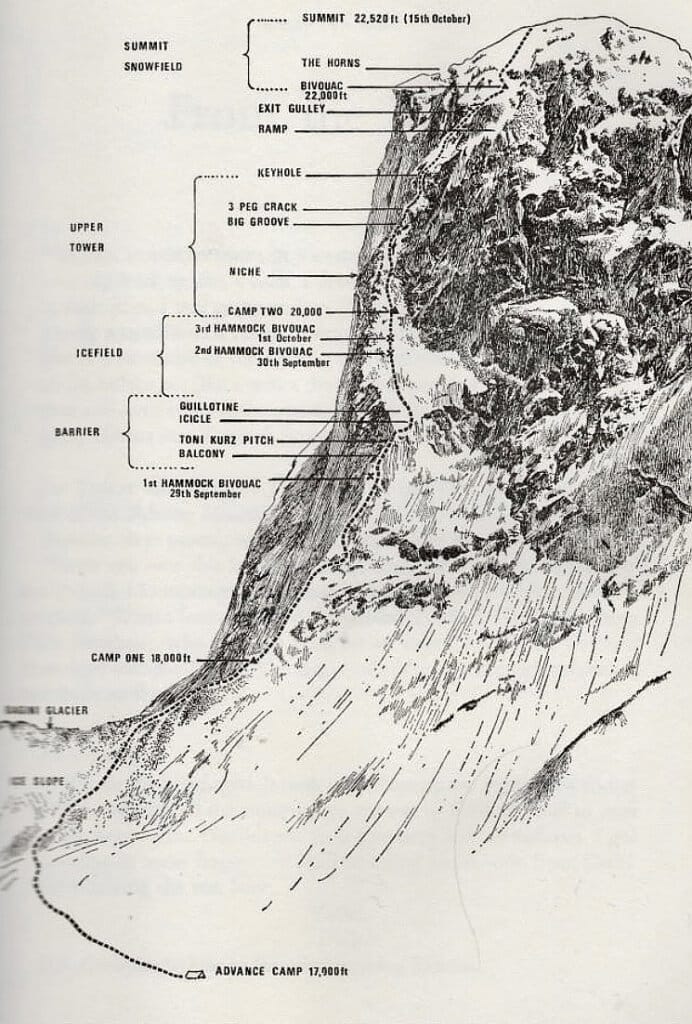
Kenton Cool - Climber and Mountain Guide
"Everest. It's totally defined my guiding career"
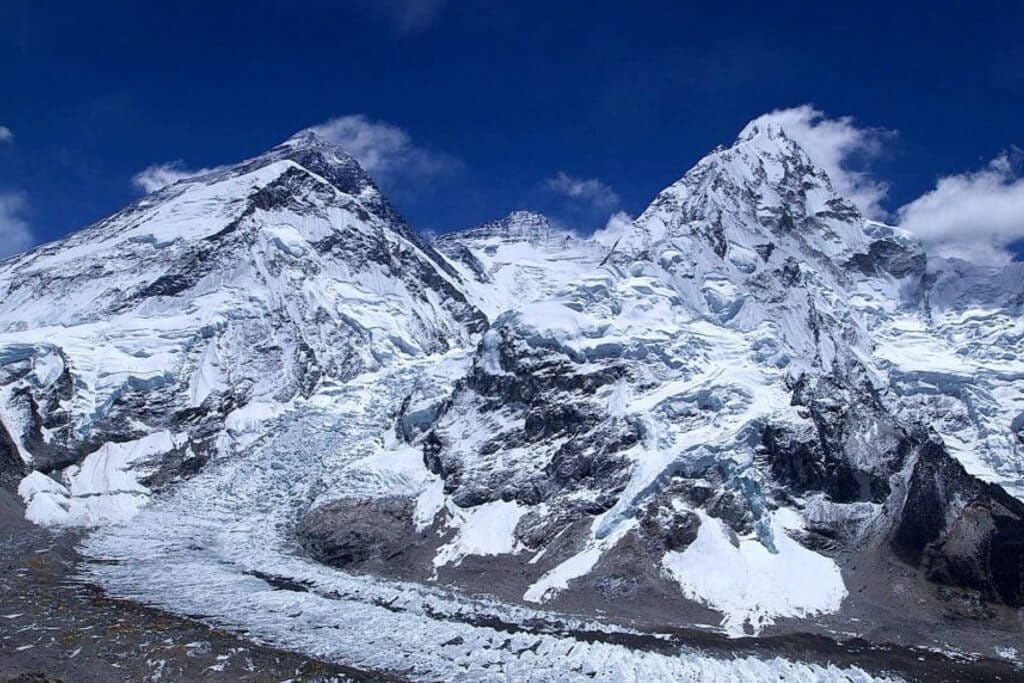
Charles Gay - Partnerships Manager, Ellis Brigham
"Carnedd Llewelyn. It tends to be quieter than it's neighbours and has better views!"
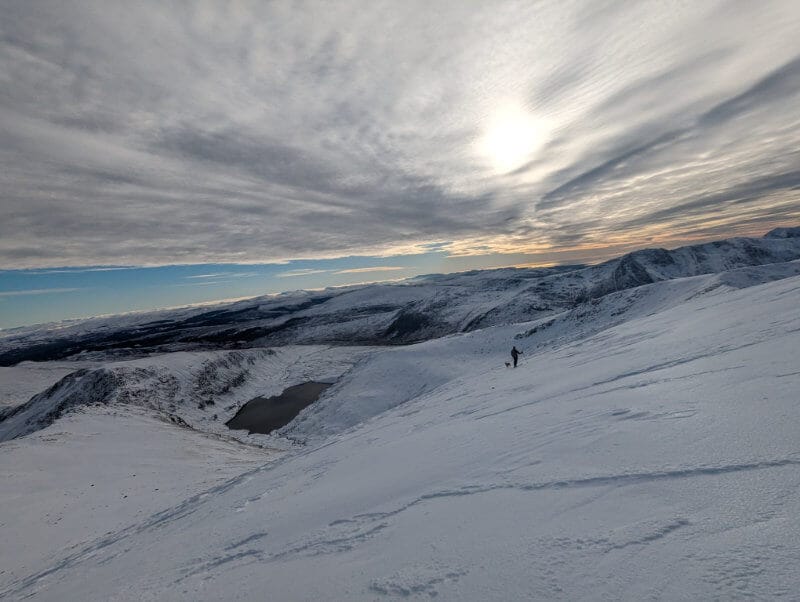
Andrew Denton, CEO, Outdoor Industries Association
"An unnamed summit in Antarctica. If I have to name just one, single mountain from 50+ years of climbing, it’s an unnamed summit in Antarctica. My wife and I made the first ascent with a friend, Nick, as part of an extended ski mountaineering trip. We were down there for a month climbing and skiing incredible mountains, many of them unnamed and unclimbed. This particular one took three days. We stashed our skis about a hundred and fifty metres below the summit and climbed an airy, corniced ridge to a tiny pointed top – the first people ever to stand there.
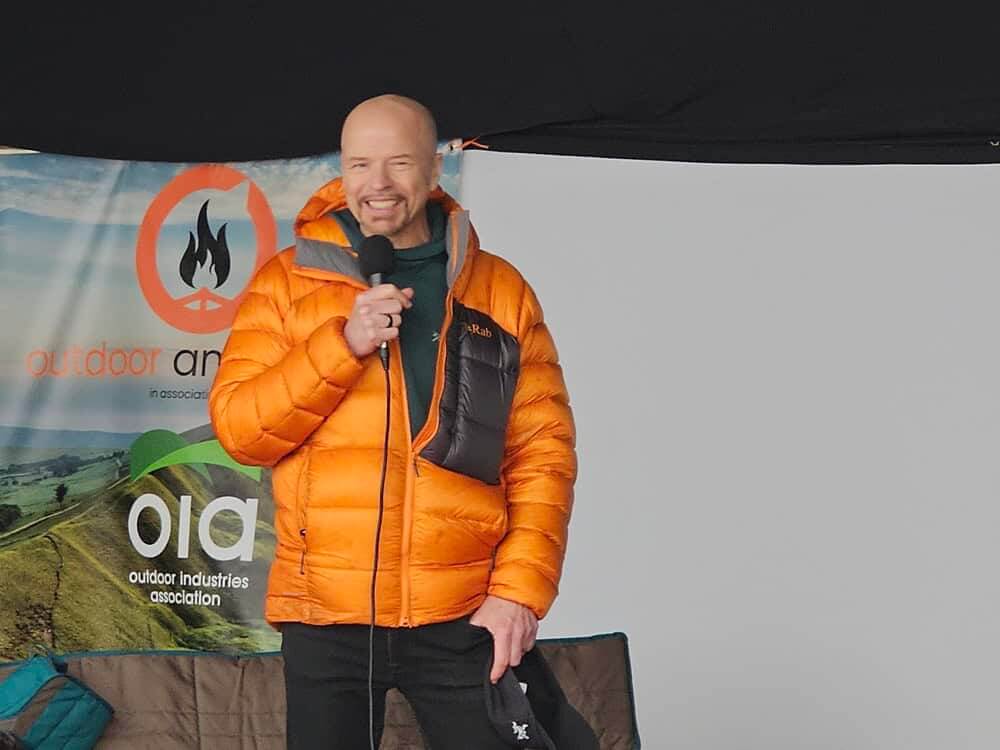
A day in the life of a GORE-TEX Jacket
Here at Plas y Brenin, we rely on gear that can handle the sheer volume and intensity of our work. That’s why our partnership with Mountain Equipment has been a cornerstone of our operations for over 20 years.
Our instructional staff are on the mountain virtually every day, all year round. Whether guiding on winter mountaineering courses or climbing for their own personal development, our gear takes an absolute pounding. This constant, accelerated use means our clothing, particularly our waterproof shells, are pushed to the very limit.
We don't just use Mountain Equipment kit; we are a crucial part of their testing and development process. By using their clothing in the worst conditions imaginable, we provide the vital, real-world feedback that helps them ensure their kit truly is Built Better. If it survives a season with a Plas y Brenin instructor, it's ready for anyone.
With such intense wear, maintaining our high-tech apparel is essential to its performance. To keep our waterproof jackets performing at their best and ready for the next downpour, our team uses Granger's Wash and Care products. It’s the only way to keep the DWR (durable water repellent) working and ensure we stay dry, safe, and comfortable.
Want to keep your gear in mountain-ready shape, just like we do?
- Check out the Mountain Equipment Waterproof Care Guide for tips on keeping your shells performing: https://www.mountain-equipment.com/pages/caring-for-waterproofs
- If your kit needs some serious TLC, explore their Wash & Repair service (UK only): https://www.mountain-equipment.com/collections/wash-repair-services
- Learn how to care for all your favorite kit in their Revere Your Gear section: https://www.mountain-equipment.com/pages/revere-your-gear
Our Partnership with O'Shea Surf
We’ve been working with O’Shea for nearly a decade now, and it’s a relationship we’re really proud of. They’re a team who share our values of creating a great product, and more importantly, helping more people get out on the water.
O’Shea was founded by Farrel O’Shea, a record-breaking windsurfer who spent his life chasing adventure. The brand grew from that passion, with a focus on creating boards that are, in their own words, “built to perform and built to last.” Just as important, they’ve always championed getting people, especially young people into board sports, and that’s been a huge driving force behind O’Shea International.
That’s why our partnership works so well. As paddlers and coaches, we’re not only about teaching technique, we’re about building confidence, sharing our passion, and giving people the tools to head off on adventures of their own.
Whether it’s schools, corporate groups, Paddle UK qualifications, or guided tours, O’Shea boards deliver the quality and reliability we need to give our community the best possible experience on the water.
5m of tape
Paddlers: What can you do with 5m of tape?
That 5m length of tape that everyone carries in their PFD... A quick dig around will result in you discovering that there are commercially available options in lengths varying from 3m up to 8m and you can of course buy it off the reel at any good outdoor shop at almost any length you like. This article is not going to try and suggest which length is the most useful as the most useful length is the one you have in your PFD 😊. However, what it is going to try and do is suggest some of the ways it can be used. See below for a bunch of suggestions in no particular order. If you have more that you can add to the list we’d love to hear them. Especially if you have used them for real.
Safety and Rescue:
- Use it to build an anchor...
- Basket hitch
- Thread
- Wrap 3 pull 2 (the gold standard of anchors)
- As a prusik
- As part of a “pig rig”
- As a short throwline
- Use it to tow something on land or water
- Use it to raise / lower your craft
- As a painter on your craft
- To stop it floating away
- To line it down a rapid
- As a flip line for a raft
- Emergency harness
- Improvised arm sling
- Hold a splint in place
- Use it to mark the takeout
- Rafting canoes together
- As stirrup to get some back in / on their craft
Camp / River Life Bodges:
- As a washing line
- To tie boats on when you’ve forgotten / run out of straps
- Belt for your trousers
- Dog lead
- Improvised hand line for fishing
- Drop it (with a carabiner on the end) as a depth gauge in murky water
- Repair a head lamp strap
- Guyline for your tent or tarp
- Bundle and carry firewood
- Lash down a broken pack, barrel lid, or hatch cover
- Hang food away from animals
- As a skipping rope
- As a makeshift net for a game of volleyball at camp
- As a whip to make your bow padder go faster
- Slackline
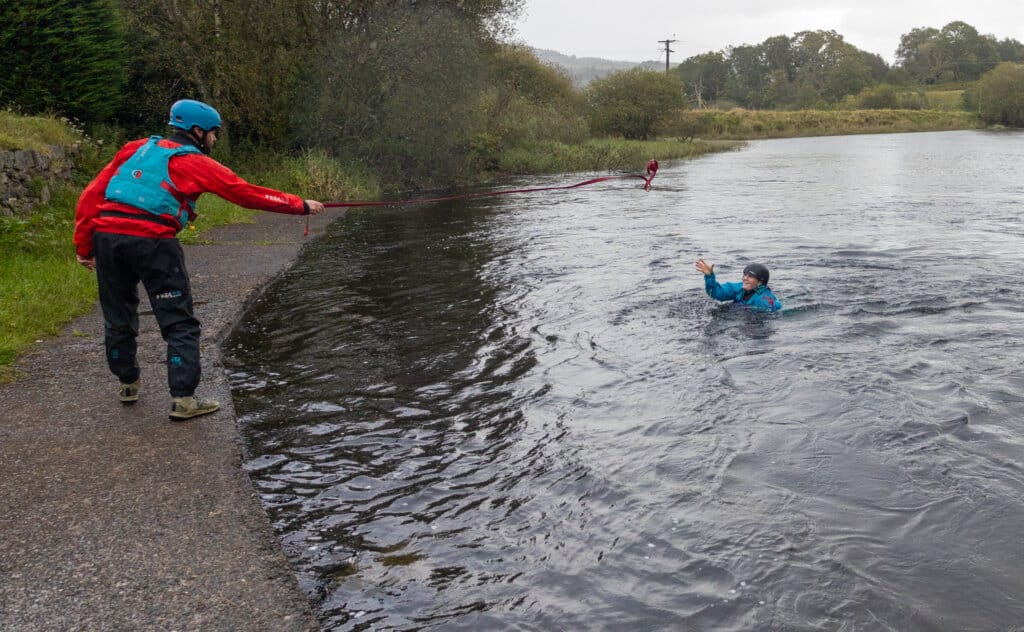
⚠️ Safety Note: Some of the techniques described in this article require specialist knowledge, training, and practice to use safely. Do not attempt them unless you are properly trained and confident in their application. Some of them are just plain daft.
For hands-on experience on this and more, check out our paddling courses.
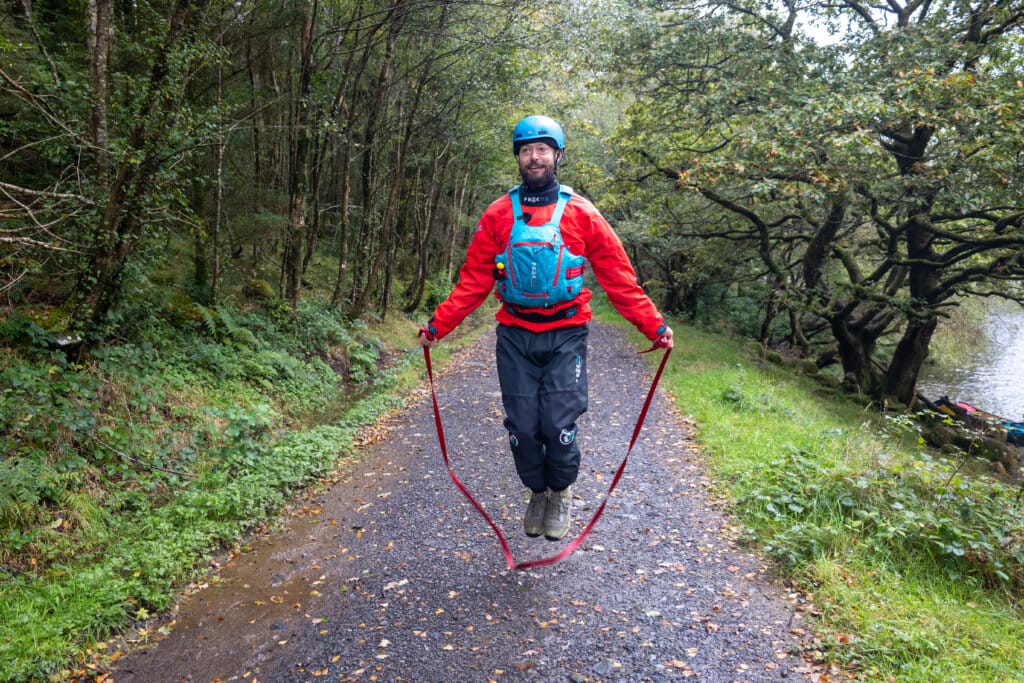
Embark: Snake river Northern Yukon territory
A year ago, Olly Sandeman was flipping through the pages of a guidebook, "Best Canoe Trips in Canada," when he came across the Snake River—300 kilometres of Grade 2/3 whitewater carving its way through the vast wilderness of the Northern Yukon Mackenzie Mountains.
After some research, we decided to offer the trip as part of PYB's Embark expedition series. These trips are coached expeditions, complete with training weekends and supported prep sessions to get a team ready. Five canoeists soon signed up for the adventure of a lifetime. The training weekend was a two-day mini-expedition focused on tandem whitewater skills, river-running strategies, and the specific skills needed for an expedition, like loading and paddling heavy boats. We also practiced essential campcraft and learned how to live safely in the wilderness and handle potential wildlife encounters.
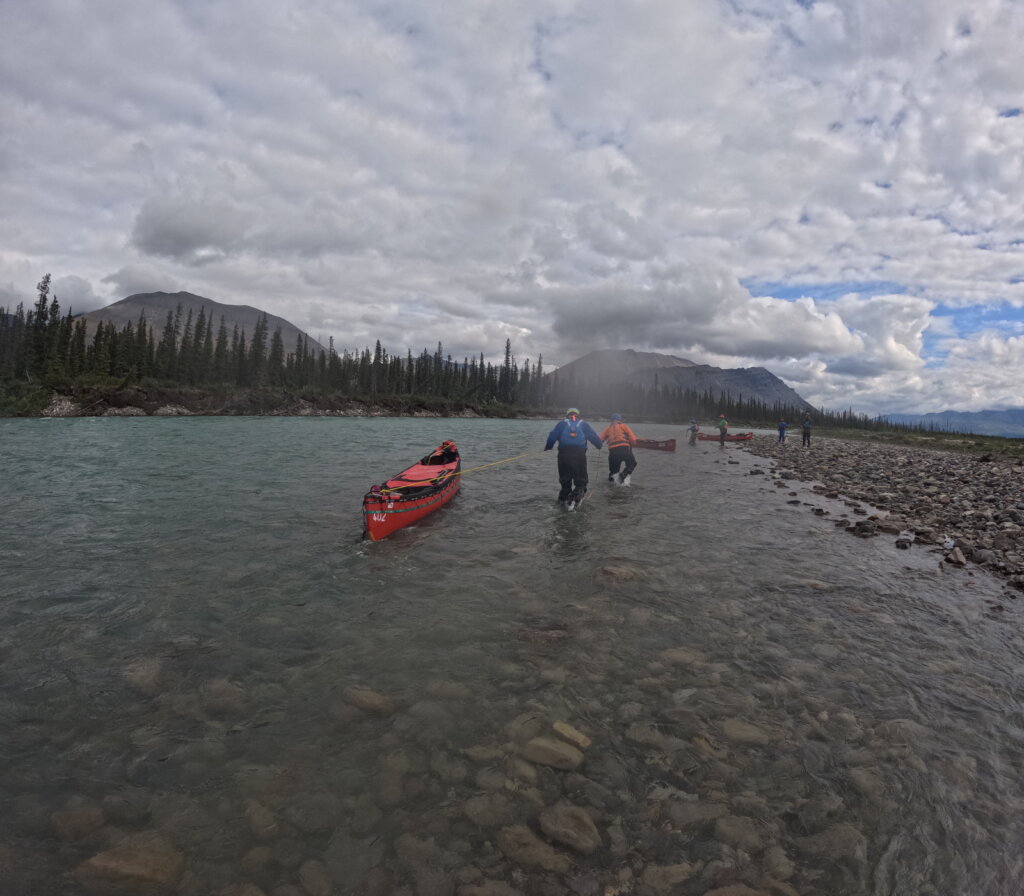
The journey to the Snake River is a long one. It began with a flight from the UK to Vancouver, then another two-hour flight north to Whitehorse, the capital of the Yukon. From there, it was a five-hour drive to the small town of Mayo, where we boarded a floatplane for an hour-and-a-half flight even further north to Duo Lakes. This final leg was a spectacular flight through the mountains, where the sheer scale of the wilderness truly set in. Once we landed, the roar of the floatplane faded, and we were left with the quiet understanding of just how alone we were.
The first night was surreal. We’d assembled our boats under the 24-hour daylight and watched a caribou swim across the lake. The next morning, reality set in: an 11-day portage over a two-kilometre trail. Four gruelling hours later, with all our gear on the other side, we ate a hurried lunch and launched our heavy, loaded boats into the river.
The river was a swift, narrow creek, the first few kilometres a slalom through overhanging trees and bushes. We were still finding our rhythm as a group, but the river gradually widened, becoming a boulder-strewn gauntlet. We paddled kilometre after kilometre through stunning forests, catching glimpses of the distant mountain range. It was a constant struggle to focus on the water in front of us when the scenery was so breathtaking. The real test came 15 kilometres in—a tight gorge with 90-degree bends pressed against a steep cliff. A single mistake, a swim, and we could easily pin a boat or get hurt. We were a long way from help.
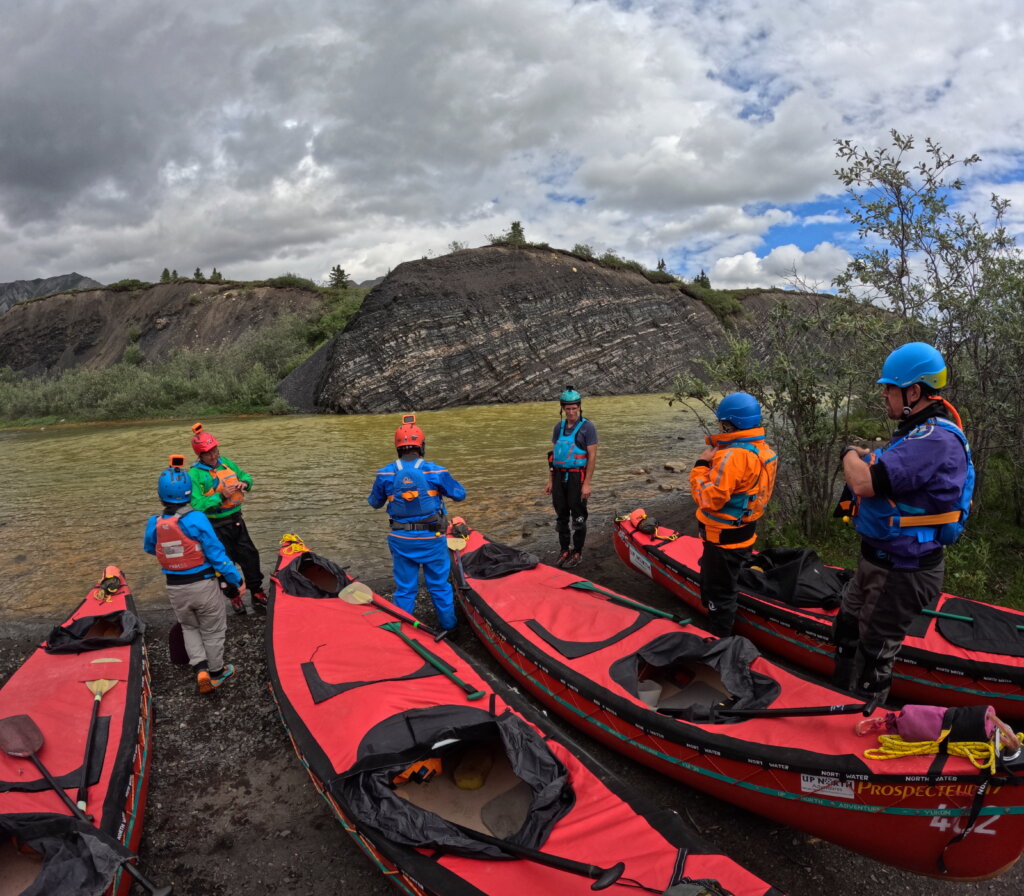
As the days passed, the river’s whitewater pushed us forward, and the views became even more spectacular. We glided past the towering peaks of Mount Macdonald, our camps marked by the footprints of wolf, caribou, moose, and bear. We were vigilant, camping with our food and cooking gear far from our tents and a tripwire alarm to alert us to any night time visitors.
By day eight, we left the mountains behind. The river gained volume and speed as we entered the lower section of the Peel River. The intense concentration we’d needed for days gave way to a newfound relaxation. We rounded bends to see moose, watched bald and golden eagles soar overhead, and were constantly entertained by the beavers that swam in front of our camp.
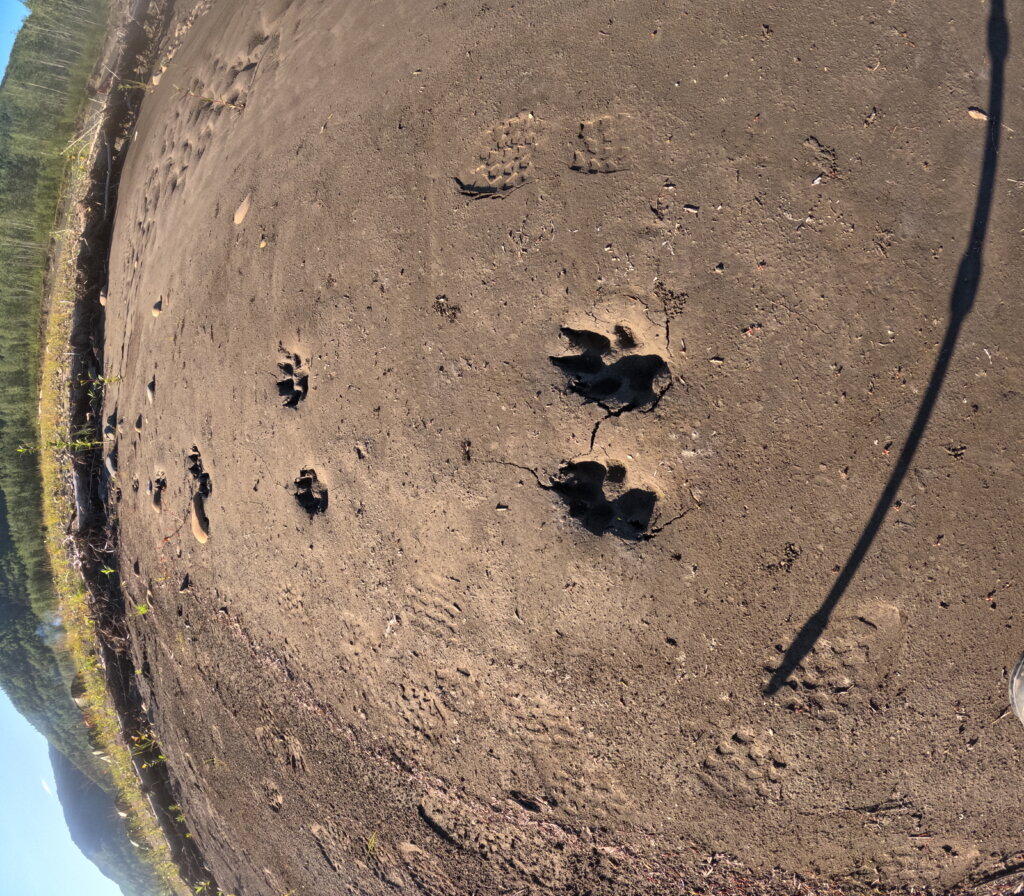
On day 11, we reached the final stretch and joined the vast Peel River, a legendary waterway that meets other famous rivers like the Bonnet Plume and the Wind. We approached our take-out at the “Taco Bar” (which, disappointingly, had neither tacos nor a bar) and met other groups who had completed their own journeys. Our final night was spent around the campfire, sipping the last of the whisky and, of course, watching more beavers. The last morning was a blur of packing as we awaited the floatplane.
The Embark expedition to the Snake wasn't just a trip; it was a bucket-list journey shared with incredible people in an incredible place. My gratitude to UpNorth Adventures for the Esquif canoe hire, Peak PS for the amazing gear, and to Bill, Sian, Mark, Sharon, and Carol for being the best possible team.
Drysuit or Separates?
Paddlers: Should you be in a drysuit?
Drysuits are great don’t get me wrong, nothing beats being able to climb out of your suit at the end of the day and jump straight in your car for the drive home. But personally, I’m not convinced that they are the be all and end all of paddling clothing. For starters they’re a lot of money and when you fall over on that muddy, slippery, bramble choked bank and rip a hole in it, you have to send the whole thing away to get fixed. That's your entire paddling shell gone, so no boating for you for the next few weeks. My experience (depending on what you use them for) is that the tops and bottoms of drysuits don’t wear out at the same rate I often end up with one half trashed while the other half still has some life left in it.
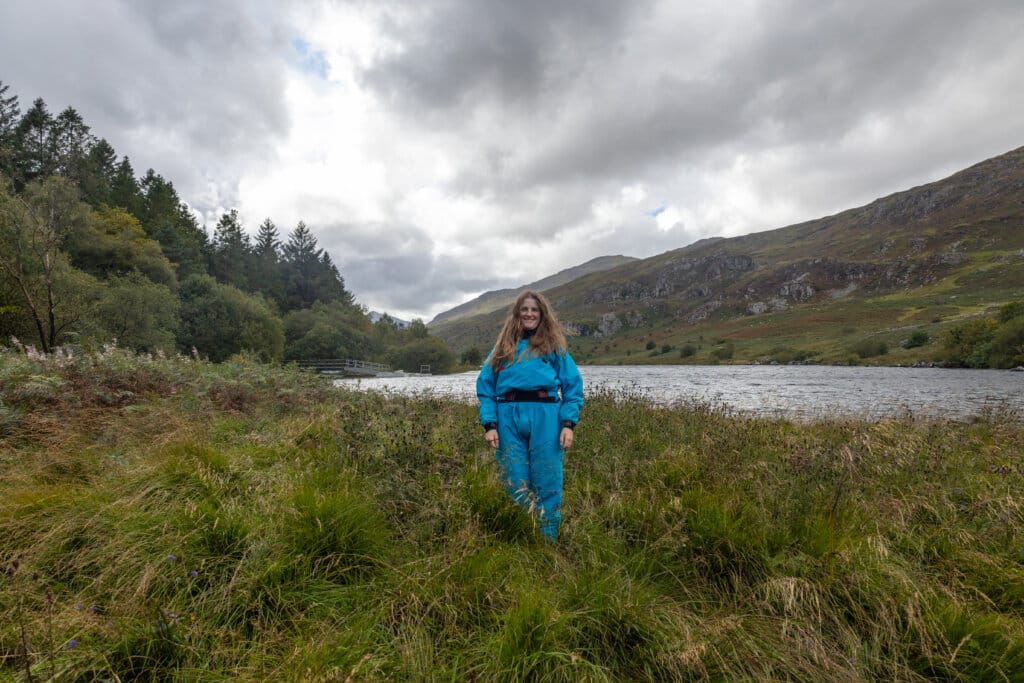
With separates on the other hand, you have choice and this is particularly great if you are into more than one type of paddlesport or are just starting out.
I remember back when I first started paddling many moons ago that my first dry cag even though it was only single waist was a complete revelation making paddling in the depths of winter so much more pleasurable. This is still a great way to start out... a Long John wetsuit and a dry cag. Possibly the most cost-effective all-weather option.
A dry cag also works well with:
- Board shorts such as Peak’s Bagz shorts ... Great when the weather is nice and warm.
- Thermal / neoprene leggings: Peak’s Neoskin Strides ... Super when it gets a little colder.
- Dry or semi dry trousers: Explorer Salopettes Evo ... Amazing for those winter paddles.
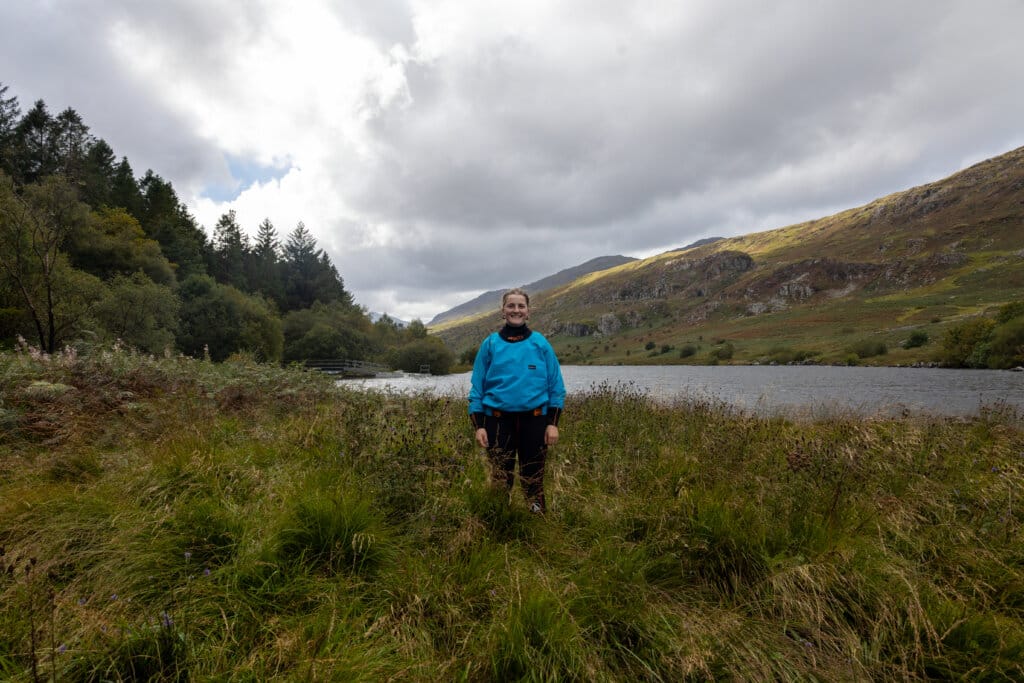
A good set of semi dry or dry trousers also work well with:
- A waterproof jacket such as your normal mountain jacket or multi sport jacket ... Great for canoe tripping or SUP touring, pockets and a hood what more could you want?
- A super warm synthetic insulated jacket ... So nice when the temp drops below freezing.
- Sea kayaking / touring jacket ... great when you want a hood and the benefits of dry arms.
But what happens when I swim? I hear you ask. Obviously if you’re in a drysuit you tend to stay pretty dry. If you are in a good quality set of dry trousers and dry cag then it’s almost as dry, especially if it’s a short swim. Don’t get me wrong if I’m teaching a rescue course where I’m intentionally repeatedly swimming then I’ll be in a dry suit. But most of the rest of the time I’ll be sticking with the versatility of separates.
Joining us on one of our paddling courses and not sure what to wear? We have a fully stocked store to keep you warm and dry.
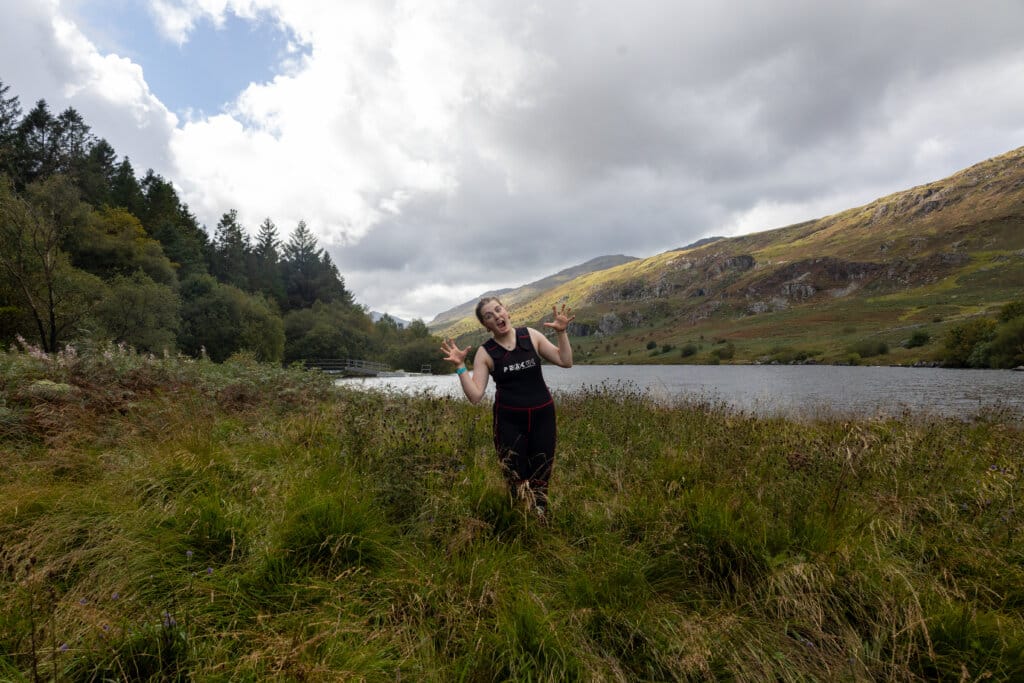
Diary of a Centre Assistant (CA) - Jodie
Jodie is one of our Centre Assistants. Not only do they keep the centre running, but in the course of their work, they gain skills, experience and qualifications to set them up for a future in the outdoor industry. Jodie has kindly shared a couple of reflections after a trip to Scotland...
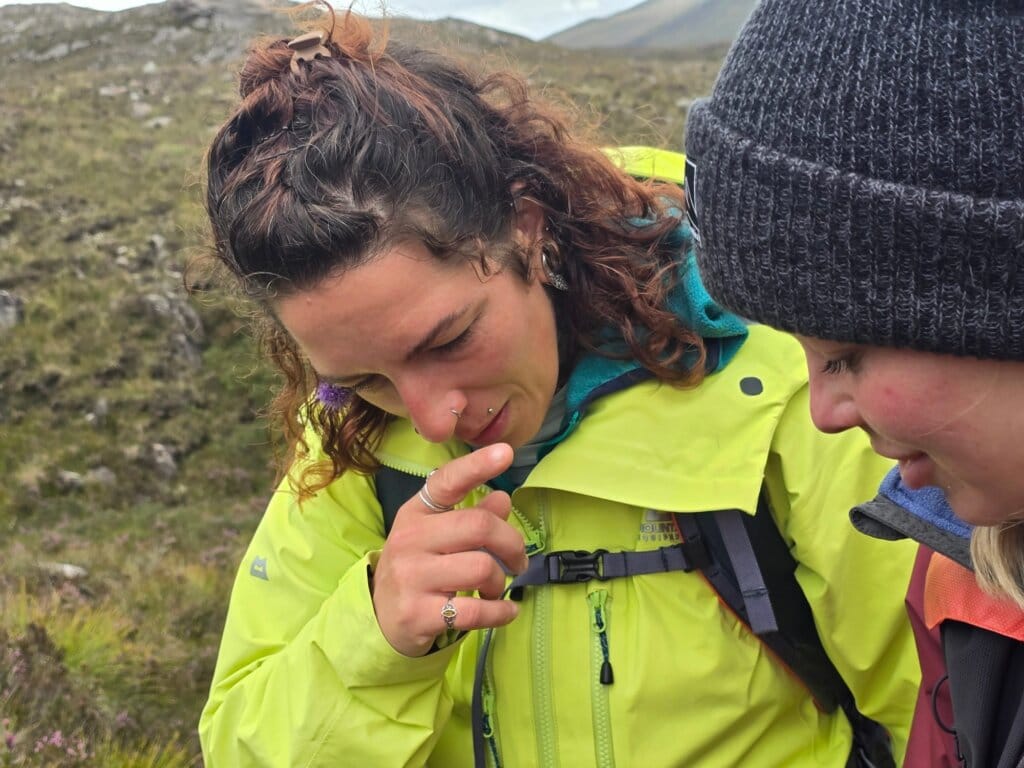
“While living in Devon I found myself constantly thinking of North Wales, the mountains, and how much I missed them...
Spontaneously applying for the Centre Assistant role at Plas y Brenin I had no idea what it entailed, only that it would take me back to the hills where I was longing to be. Super-stoked about having been offered the job, I had no idea about the upcoming perks to the role and working at the Brenin.
Since starting, I have completed numerous courses and training, had so much support and gained so much invaluable knowledge from all of the team.
A few years ago I had a thought that one day it would be nice to obtain my mountain leader qualifications but had no idea how I would get the time or funds for it. Regardless of that I began building up all my pre-requisites for the training and assessment.
Much to my surprise and shock, when I arrived, I was booked onto the mountain leader training and shortly after was told to start preparing for assessment!
With my assessment fast approaching I have been working towards obtaining all the “quality mountain days” required for assessment, practicing navigation in unfamiliar environments, challenging terrain, and conditions.
Where better to practice such skills than the remote, challenging and wild landscapes of Scotland?
Having just got back from Scotland after spending almost 2 weeks in the hills, I have managed to obtain some quality mountain days.
In environments I've never set foot in, over challenging terrain, and in the constantly changing and often harsh weather conditions I successfully managed to navigate myself and some friends through the hills.
It was great to get the time to consolidate my skills, and build on the knowledge and tips gained from the team.
From Torridon to the Cairngorms, I got to explore some amazing and remote areas that were new to me... I can’t wait to get back out there and explore some more.”
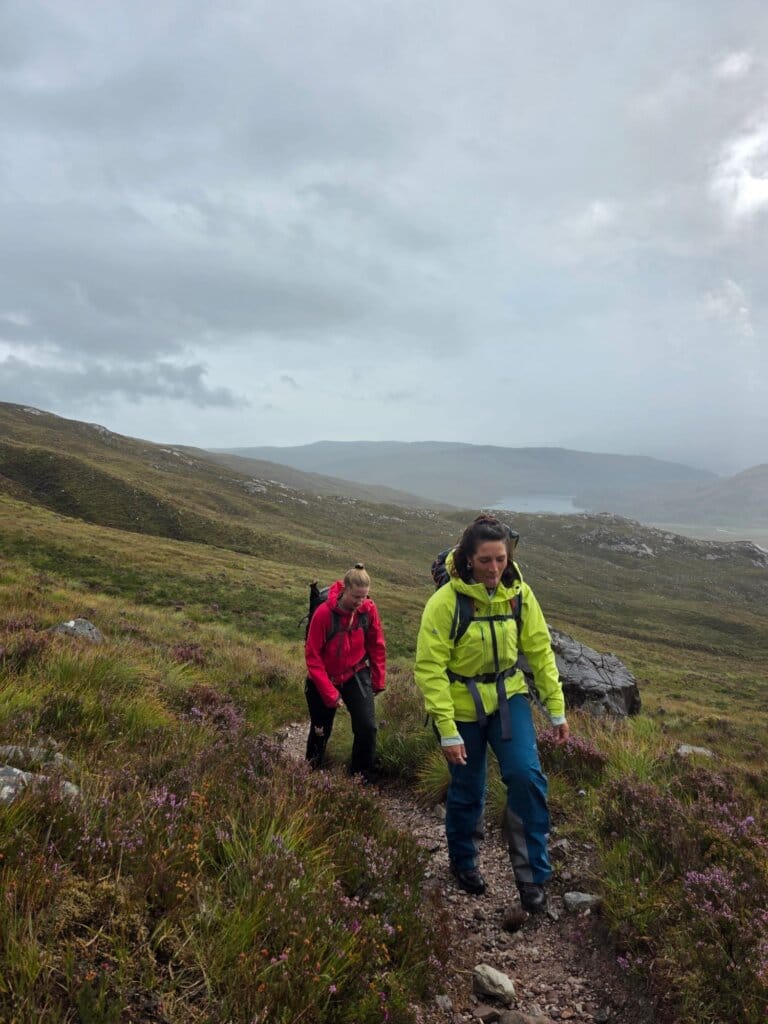
Considering a career change? Check out our instructor development program -
Instructor Development Program
Want to work with us?
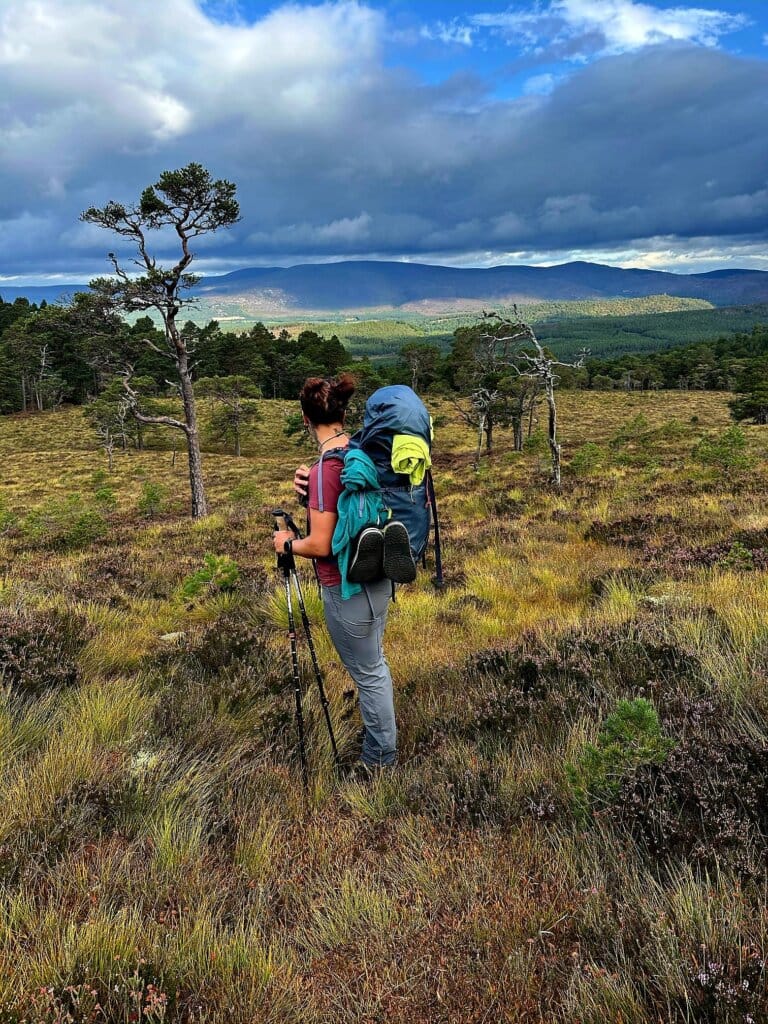
Diary of a Centre Assistant (CA) - Haf
The Torridon Classic
When Josh asked if I wanted to "recce" a route for work, I was hesitant—until he mentioned the location. The opportunity to ride in such a beautiful area was too good to pass up. We drove to Torridon and spent the first night at a free campsite. The weather looked bleak, but we were here, and excitement for what lay ahead was all that mattered.
We woke early on Thursday, a promising morning after the previous day's gloom. We packed up camp and drove five minutes to the start of the Torridon Classic. The car park was bustling with climbers and hikers, all of us setting off on our own adventures.
We didn’t know what to expect, other than two brutal climbs, each a 500-meter ascent, and the promise of incredible descents. After a few kilometres on a quiet road, we turned onto a dirt track that snaked through a massive estate. This led to the first big climb. A head injury had kept me off my bike for a year, and I'd lost a lot of fitness, so this climb was a gruelling challenge. The weather, which had been so promising, turned into a hot, windless day under a blue sky. We were forced to take lots of breaks, but the heat also brought out swarms of hungry horseflies.
Despite the challenges, this ride is still one of the best I've ever done. The first brutal climb was followed by an epic descent into Achnashellach. It's probably the most remote ride I've ever done, and while the thought of something going wrong was unnerving, it was exhilarating to access such a wild place by bike. The descent was a perfect mix of technical corners, switchbacks, and dreamlike rock slabs mixed with chunky, rocky sections.
We hit the halfway point in Achnashellach and refuelled with our trusted Lidl bakery pizzas. We were exhausted but prepared for the second climb, which felt like a fever dream. The glaring sun made it the most challenging ascent I've ever faced. I have to thank Josh for his patience; his fitness is on a different level, and the climb was a huge mental challenge for me, but he didn't mind waiting. After what felt like a year of climbing and a 20-minute break in a cold bothy, we reached the top.
The second descent was even better than the first, a seemingly endless series of slabs with a stunning view of Liathach in front of us. It took us all the way down to Torridon, where we stopped at the fancy Torridon Hotel for a couple of pints of coke. The bill was £15 for four cokes, ouch! It was incredible to end our journey at the sea after traversing such a massive landscape. I would recommend this route to anyone looking to get into bigger mountain rides. Remember to roam responsibly, respect the countryside code, and leave no trace.
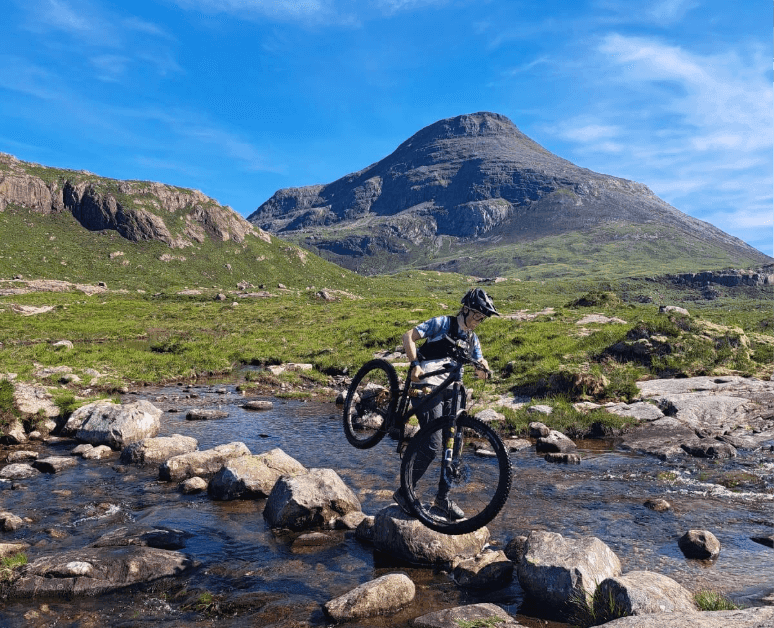
Tips and Tricks for Hill Riding
Riding in the hills can be both terrifying and truly wonderful. Here are a few tips to stay safe in mountainous terrain, whether you're on a bike or on foot.
Having grown up in the mountains of North Wales, I've had countless opportunities to learn essential safety skills in these environments. I find it difficult to justify going on these big, remote journeys by myself because I've seen the consequences first-hand, but I do occasionally ride solo. When I head out alone, I ensure my phone is fully charged and I have a portable charger with me. I carry a well-stocked first aid kit and a group shelter, as well as a map and compass. I always send my route and estimated completion time to at least two contacts, letting them know when they should worry if they haven't heard from me. My partner, family, and I also share our locations on Life360 as an extra precaution since we all enjoy adventurous, and sometimes dangerous, pursuits!
Beyond emergency gear, I also ensure I'm dressed appropriately and have the right equipment. My bag always contains a puncture repair kit (plugs, patches, a tire boot made from an old toothpaste tube, and a spare tube), a multitool with hex keys, Allen keys, and a cross-headed screwdriver. I also carry a Lezyne Micro Floor Drive pump, a waterproof coat, and extra water at a minimum. Of course, this changes depending on the route, weather, and time of year.
Want to take your riding to the next level? Check out our range of skills and qualifications.
Paddlers: What’s on your feet?
It's an often asked, and perfectly reasonable question from people new to paddling. How and what do you choose from the large selection of available offerings? Now as with the answer to lots of outdoor questions...
It depends...
It depends on where you are doing most of your paddling and the type of craft you are in / on, this often requires a compromise.
If you are mostly paddling in the UK then most of the time it is pretty cold, so thermal insulation is top of the priority list. This is generally achieved in 1 or 2 ways (or a combination of the 2). This is either through the material the footwear is made from or through wearing thermal insulation on your feet AKA socks.
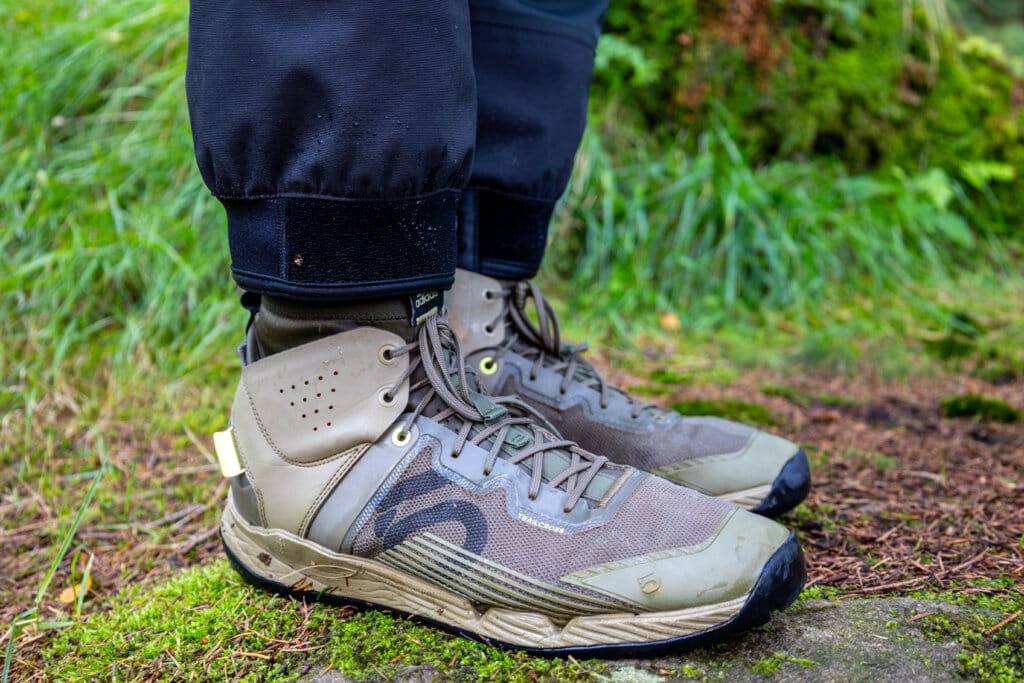
Footwear made from neoprene is generally the warmest. These can range from around 2mm up to 6mm thick. Obviously the thicker the neoprene the warmer the footwear. Neoprene works best when it has trapped a thin layer of water between it and you. This results in wet feet (which can result in some interesting foot fungus, or worse if feet are not dried properly at the end of each day) so if multiple days are planned then some way of keeping your feet dry is a good option... dry suit or dry suit trousers. Woollen socks work well when wet as do PrimaLoft socks although these are an expensive option. Wet suit socks work well if there is little to no insulation in your footwear and you don’t mind wet feet. Do not wear cotton socks your feet will only freeze.
If you paddle on UK rivers then you will spend a chunk of your time on steep often muddy and slippery banks. If this is the case then footwear with a deep tread pattern to cope with the mud is a good idea. Rubber that works well on wet rock is also obviously a great idea. Noting works well on seaweed... go carefully.
If your paddling destination will be rocky and sunny with not much mud (e.g. California) then something with a less deep tread pattern but lots of rubber to maximise your contact with the rock will work well.
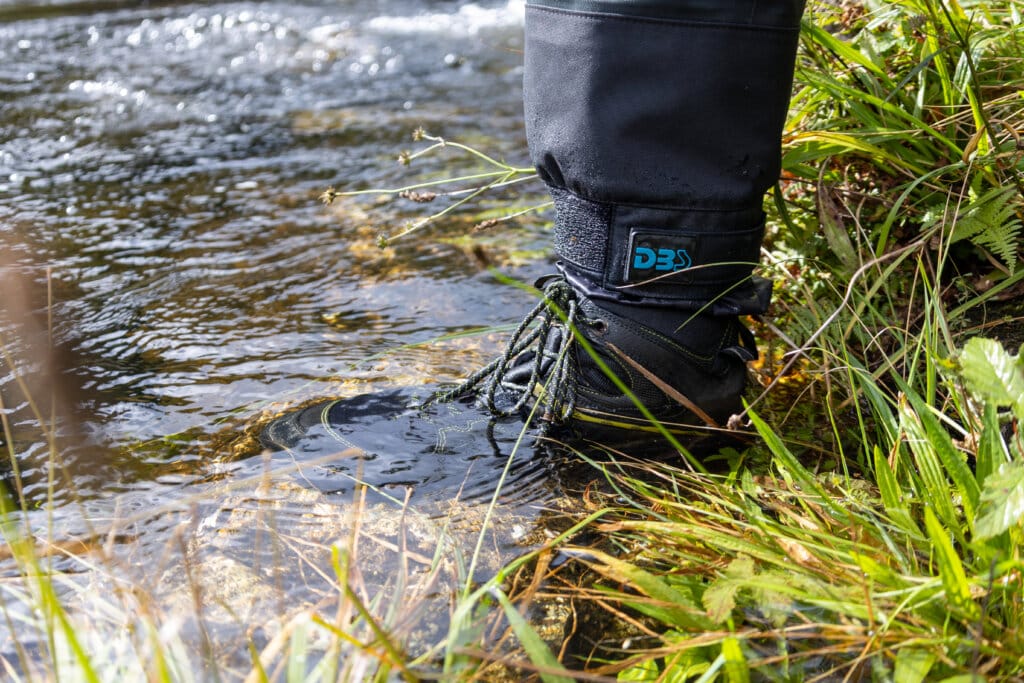
Other things to consider are:
- They need to attach firmly onto your feet so that they stay on should you swim.
- The soles need to be thick enough so you can move quickly over sharp rocks to rescue your mate, without doing the “OO Ah dance.”
- Do you want boots that will provide some ankle support / protection but might be a bit on the clumpy side and be difficult to get into your boat / under a kneeling thwart? Or are you less concerned about protecting your ankles but more concerned about having something flexible and therefore possibly more comfortable?
- Wetsuit boots are often the warmest option but often have very thin soles and or soles that are very slippery, especially when it gets muddy.
- Will they fit with warm socks, wetsuit socks and or dry socks on?
- Will they survive the harsh river / sea environment and constantly being wet and then forced dried by you sticking them on the radiator or in a drying room?
Look and think outside the box, my current favourite water shoes are sold as mountain biking boots.
Check out our paddling courses here:
